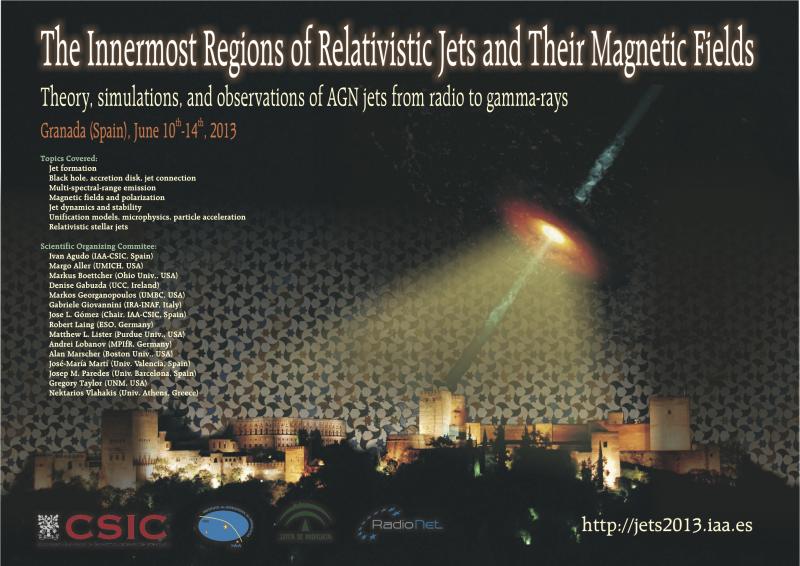The Innermost Regions of Relativistic Jets and Their Magnetic Fields. Granada (Spain). June 10th-14th, 2013.
Pacciani, Luigi
What can we learn from high energy flares in the Fermi sample of FSRQ: from a case study to dozens of objects.
Author list: L. Pacciani, et al.
In 2008 the flat spectrum radio quasar GB6 J1239+0443 (z=1.762), underwent an high activity period at all wavelengths. In particular, at optical-uv wavelengths, the source underwent a flux enhancement of a factor 15-30 in 6 years, and >10 in half a year, showing a transition from accretion disk to synchrotron jet dominated emission. During the flare, Fermi observed a flat gamma-ray spectrum, extended up to 15 GeV, with no statistically-significant absorption from the broad line region (BLR), suggesting that the blazar-zone is located beyond it. We obtained the same findings from the modeling of the broad-band spectral energy distribution for the flaring activity periods, which is well constrained by the multiwavelength data collected, and from the accretion disk luminosity and black hole mass that we estimated from the archival data. Other authors suggested that 4C +21.35, PMN J2345-1555, and 3C 279 underwent high energy flares originating from outside or just bejond the BLR. Here we report the MWL studies on a dozen of FSRQ which we propose radiate gamma-rays far from the central SMBH, and we will discuss the scenarios originating from this result.




